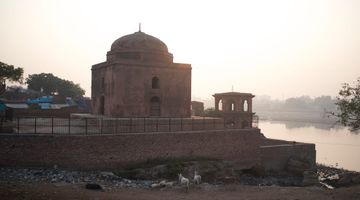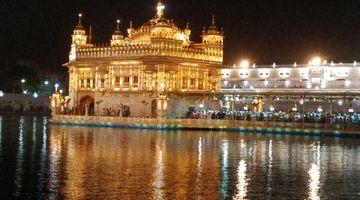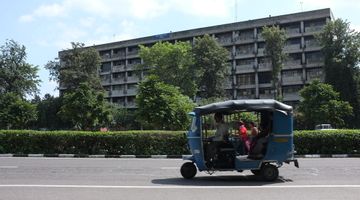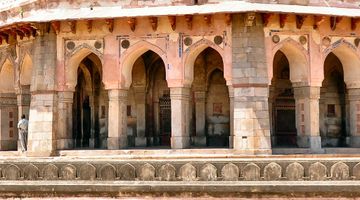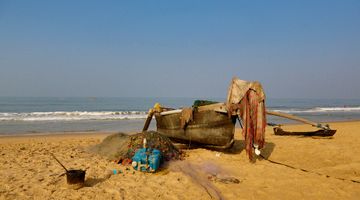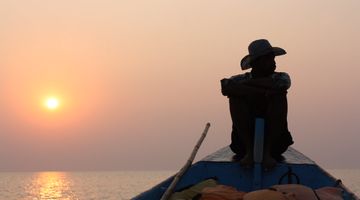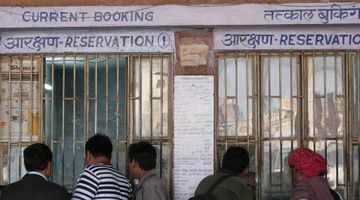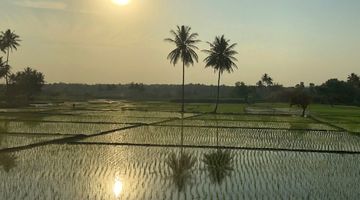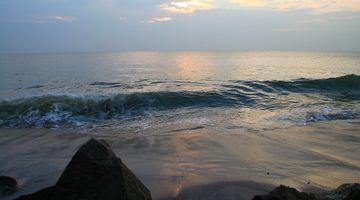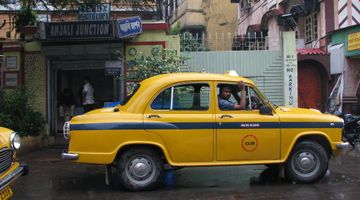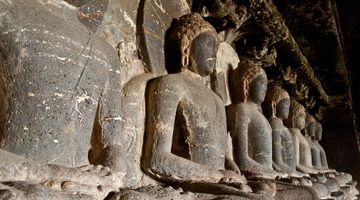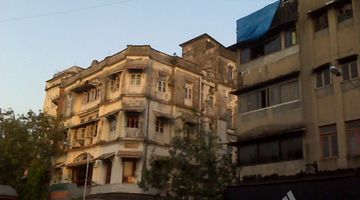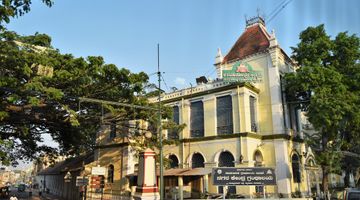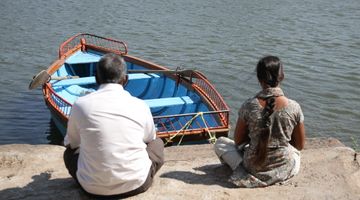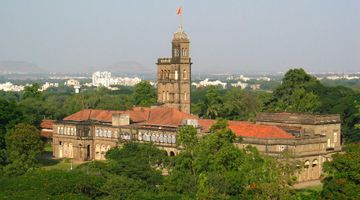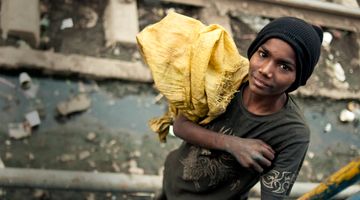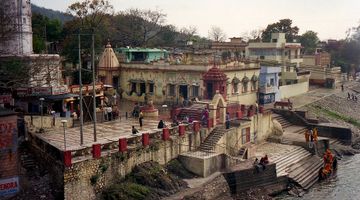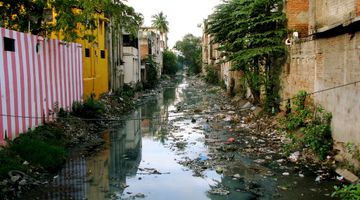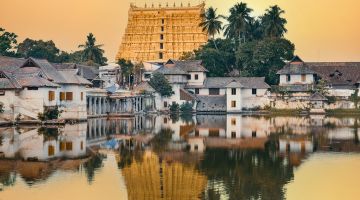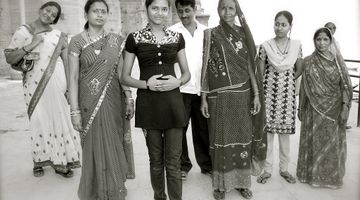Weather in India and the Best Time to Visit Different Regions
India’s one of the top key tourist destinations in Asia, welcoming over 8 million visitors each year. Its weather, however, is the dominant factor in deciding when to visit this exotic and enticing country. The Subcontinent’s climate differs greatly from the Western climatic delineation based on the four season system of Summer, Autumn, Winter and Spring. India has only three seasons winter, summer and the monsoon. The weather in India, however, is extremely varied with the most influential feature being the Monsoon (or the wet season).
Seasons in India
Together the wet and the dry season produce a three-tier general climatic period over much of the country:
- 1) hot and wet weather from June to September;
- 2) cool and dry weather from October to February; and
- 3) hot and dry weather from about mid-June until March. December and January are the coolest months of the year with temperatures dropping to as low as -15°C in some parts of the country.
On the other hand, summer temperatures can reach near 50°C during the months of May and June. The monsoon coincides, or rather follows, the scorching temperatures and travelling around is best avoided during this time.
When is the best time to visit India?
The best time to visit India is between October and March when the weather is pleasant throughout the whole country.
It is, however, important to remember that India’s geographical diversity also extends to its climate, making for a vast range of changeable weather conditions. Some of these may even occur unexpectedly but on the whole India’s three-tier climate system is pretty reliable.
Generally, India is hot most of the year yet with significant variations from region to region.
Humidity and heavy rainfall during the monsoon is something to take into consideration as it may cause serious disruptions to your plans.
The months of June and April can be unbearably hot in the North and very humid in the South. The monsoon period is particularly heavy with rainfall in the southwestern states of Goa, Maharastra and Kerala. The Himalayas can be very cold from November to January, but the luscious foothills provide a welcome escape from the plains between March and June and again in September.
Winter (December–March)
The most opportune time to see as much of the country as possible without being hindered by its climatic temperament is mid-October/November to March. Delhi, Mumbai, Agra, Varanasi, Rajasthan, Goa, Karnataka and central states such Madhya Pradesh and Chhattisgarh are at their best during this time of year.
If you wish to travel exclusively South, however, aim to get there before May and June as the weather in Kerala and Tamil Nadu are at their best between January and early March. Please note that intense tropical cyclones occur in some parts of India in what is referred to as a post-monsoon period, originating from the Bay of Bengal and the Arabian coast. They are notorious for causing heavy rainfall and storm-tides, especially in Andhra Pradesh, Odisha and West Bengal during the month of October. The post-monsoon period is also known to affect the Himalayas with intermittent storms and persistent rain and snowfall, which then carries to the state of Jammu and Kashmir.
Summer (April–June)
Once spring arrives, however, the Subcontinent begins to warm up again and by late March temperatures are at their highest reaching around 50°C across most of the Gangetic plains and the Deccan plateau. Temperatures peak in May and early June, making it the most auspicious time to visit the hill-station towns and the mountainous regions across the country. From about this time onward the Himalayas become more accessible, and the trekking season reaches its peak in August and September while the rest of the Subcontinent is overwrought with torrential downpours.
Monsoon (July–September)
The monsoon commences on the Keralan coast at the end of May, moving northeast across India for about a month and a half. During its peak, the monsoon is characterised by almost continuous rain with short intermissions of clear skies and sunshine. The humidity, however, especially in the jungle regions of the northwest and the delta lands of Bengal is extremely intense. The rains frequently wreak havoc, disrupting all forms of telecommunication due to power outages. In the Himalayan region, landslides are common and unpredictable and thus entire valleys often come to a standstill due to road blockages. In some places this has been known to last for weeks, in others it may only last days.
The wet season begins in earnest in the middle of June and ends about mid-October. It gradually travels across the country with varyingly heavy rainfall and, in some cases, flooding. Normally, three-quarters of the country’s annual precipitation takes place during these months.
Post-monsoon (October–November)
By the month of September, however, the monsoon recedes from the North, but it takes some time before the overcast skies disappear altogether. The East coast of Andhra Pradesh, Tamil Nadu and the Southern state of Kerala receive a second round of rainfall during the months of October and December when the retreating monsoon comes in from the Bay of Bengal.
In other parts of India, however, the month of December brings with it clear skies although temperature levels tend to remain relatively cool. During this period, the most marked contrast is between the North and the South. While, for example, the Himalayas may still be experiencing intermittent snowfall which often carries its chills toward Delhi, Tamil Nadu and Kerala remain hot and humid.
When to go where in India
Due to India’s vast regional diversity, from the coastal areas to the mountainous range, it is imperative to know which part of the country you wish to visit before you set off.
The Himalayas
The famous mountain of the Himalayas are best explored from late May to September, during the summer months as temperatures during winter can dip below minus.
Not only that the unforgiving weather conditions during winter isolates much of the region from the rest of the country with frequent landslides, power outages and road-blocks. It is, therefore, best to travel to any one of the mountainous states – Uttarakhand, Himachal Pradesh and Arunachal Pradesh – when the sun illuminates the snowy hilltops, making its numerous trekking routes, temples, waterfalls and lakes easily accessible.
The Plains
The Northern Plains of India, including the desert state of Rajasthan, are known for their extremely hot summers, distinctly cold winters and continuous rain during the monsoon months of July to September.
The perfect time to travel to this part of the country is between mid-October to mid-March, when the weather is at its best and most conducive to various tourist activities. It is the ideal time do some sightseeing in Delhi, visit Agra, see the Holy City of Varanasi and wander around the historical ruins, monuments and palaces dotted around Rajasthan. Not only that, if you are lucky enough, you'll also get to enjoy some of North India's festivals held during this time of year so be sure to take a camera with you!
Western India
This part of India, comprising of the states of Goa, Gujarat, and Maharashtra, is renowned for being hot pretty much all year round. The climate does vary, however, from state to state ranging from tropically wet, to dry, to semi-arid. The temperatures in the coastal region remain pretty steadfast throughout the year, starting from around 20°C.
It is best to visit West India during the winter months as summer temperatures in the state of Maharastra, Goa, and Gujarat can reach as high as 45°C. Mumbai and northern Goa, however, experience cooler winters with minimum temperatures of about 15°C so be sure to take some suitable clothes to keep the chills away. West India offers a wide range of sights and activities from the Konkan seaside to the legendary forts, grand palaces, national parks and shrines found in Gujarat and Maharashtra.
The best time to visit is between November and February.
Southern India
The most opportune time to visit the tropics of South India is during the winter months, between December and February.
Kerala, Tamil Nadu and the state of Karnataka are best explored while the temperatures range from about 25 °C to 30 °C and the humidity levels are at their lowest. It is, however, worth noting that the hill-station towns, such as Munnar in Kerala, tend to get pretty chilly both in the morning and the evening. The coastal region of Karnataka offers an ideal escape from the heat with a dip in the Arabian Sea. It is worth keeping in mind that while the temperatures are relatively high during the day in some parts of the region they tend to drop in the evenings so keep a lightweight shawl handy.
Eastern India
The region, comprising of the states of Bihar, Jharkhand, West Bengal, Odisha and the Andaman and Nicobar Islands, lies in the humid-subtropical zone which experiences extremely hot summers from March to June, the monsoon from about July to October and mild, pleasant winters from November to February.
You should certainly visit East India if you are interested in exploring a varied region renowned for its historic monuments, temples, its wildlife sanctuaries, city sights and dance and music festivals. Along with having some of the most interesting cultural, historic and social exponents in the whole of India, the region is famous for its love of cricket and is home to the Eden Gardens cricket stadium in West Bengal.
Best time to visit is during winter, from early November to late February when the temperatures hover around 25 °C to 35 °C.
North Eastern India
This part of the country is both most culturally and politically diverse altogether comprising eight states including, Arunachal Pradesh, Assam, Manipur, Meghalaya, Mizoram, Nagaland, Sikkim and Tripura. It has a subtropical climate and sees the heaviest rains during the monsoon, with many places receiving as much as 80 inches of annual perspiration during the summer. Cherrapunji, on the Meghalaya plateau, is officially one of the rainiest places in the world, so if you plan to travel there please be advised to pack heavy-duty rain-protective gear.
The highest summer temperatures occur in West Tripura, frequently reaching around 40°C. This particular region has some of the Subcontinent’s last remaining rainforests, as well as some of the most exquisite natural wildlife preserves in the world.
The mountainous areas of Arunachal Pradesh, the Himalayan ranges in the northern border with India and China has the lowest temperatures, which tend to drop well below zero and are known for heavy snowfall.
The best time to visit North East India is between November and April.
Travellers Tips
-
Mosquito repellent and a first aid kit – including some generic painkillers, plasters, an antiseptic cream, anti-diarrheal medicines and re-hydration salts – are a must.
-
Lightweight, loose-fitting, modest clothing for the South; a waterproof overcoat, a few jumpers, socks, sturdy footwear and even thermal underwear for the North.
-
Umbrellas, plastic backpack covers, refillable water bottles, torches, small tents, sleeping bags and fleece blankets may also come in handy.
-
The most important thing to remember when planning a trip to India is that you should only take along what is absolutely essential – as all else is widely available there – and all that is essential should be comfortable, including footwear, clothing, backpacks and all other particulars.

